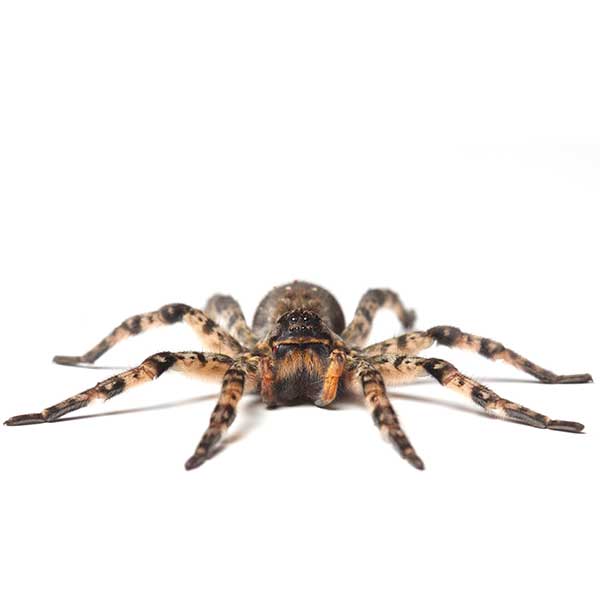Pest Description
Wolf Spider Habits
Even though spiders are beneficial due to their role as predators of insects and other arthropods, they still are a common Northwest pest as many people fear or dislike spiders because of their looks, speed of travel and sometimes reactive bites. Most spider bites occur as a reaction or for protection at night when spiders are more likely to move about in our structures and when we may roll over them during our sleep or sit on one in a piece of furniture. This can be a disconcerting thought which is why many people like to control their populations inside while allowing them to perform their role of insect population control on the outside.
Biology of Spiders
Spiders resemble insects and sometimes are confused with them, but they are arachnids, not insects. Spiders have eight legs and two body parts: a head region (cephalothorax) and an abdomen. They lack wings and antennae. Although spiders often are found on plants, they eat mainly insects, other spiders, and related arthropods, not plants. Most spiders have toxic venom, which they use to kill their prey. However, only those spiders whose venom typically causes a serious reaction in humans are called “poisonous” spiders.
Spider Control & Prevention
Spiders can be a serious pest problem for some customers; if neglected, they can increase the risk of spider infestations and exposure to bites which may be harmful to individuals sensitive to their venom. A trained pest management professional is crucial to resolving your spider problem. Comprehensive spider service includes three steps:
- Inspection. Thorough inspection can determine level of activity in the home as well as location of sites where spiders will be predisposed to infest. Based on the technicians findings and information from the customer we can make a proper diagnosis of the treatment strategy as well as recommendations for prevention in the future.
- Treatment. Typical treatment options may include treatment of the inside baseboards to quickly help eliminated spiders inside. Outside treatment may include treatment of window and door frames, eaves and/or base of the home or structure to help reduce populations around the home as well discourage infestations in the near future.
- Follow-up. Treatment for spiders can be very effective. However, due to the relative short lifespan of environmentally friendly products as well as spider biology (long legs) limiting contact with the dried residual chemical, regular follow-up treatments are recommended to protect the home against future infestations. Quarterly perimeter treatments around the exterior of the home are a great way to ensure your home stays spider free as well as help with other pest issues in and around your home and/or structure.









